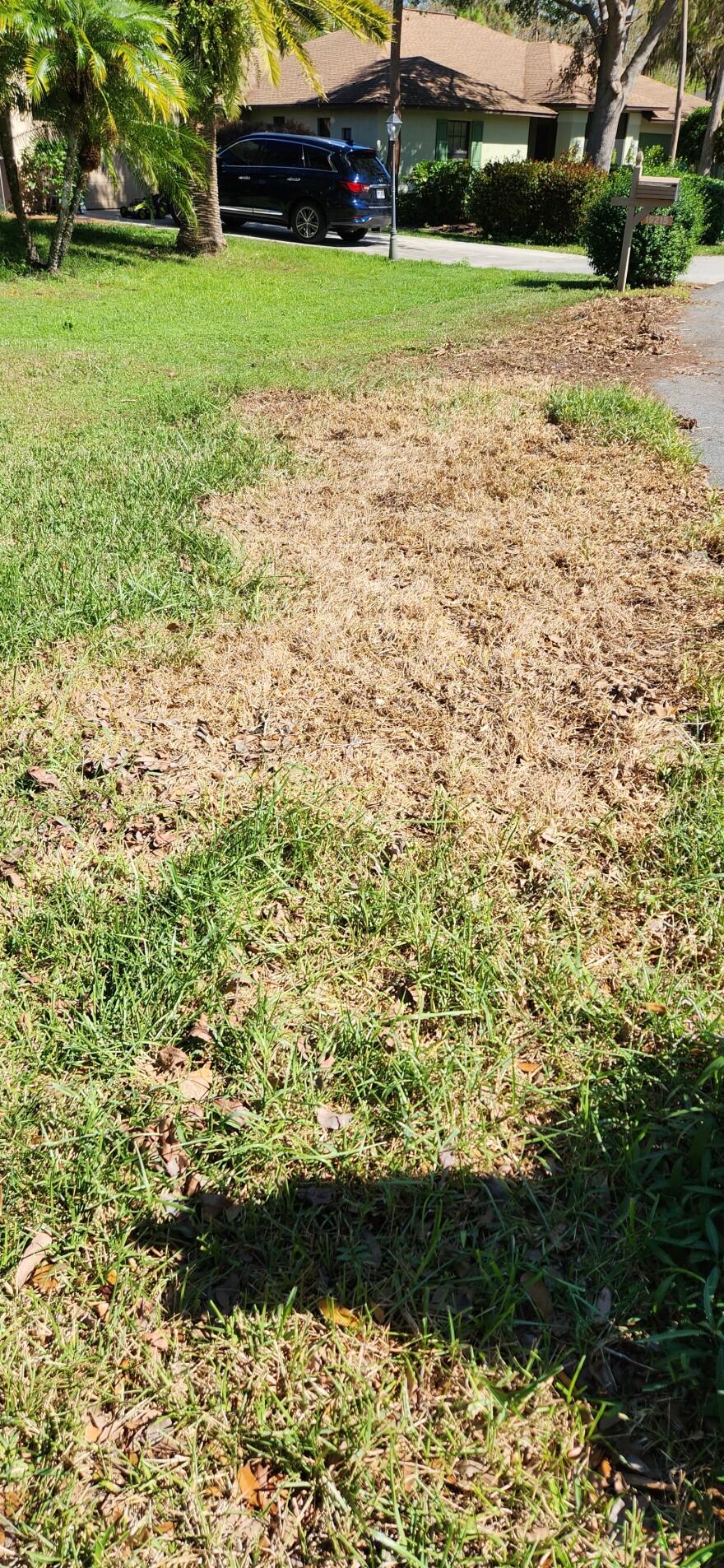The piles of shattered stumps, limbs and leaves left by Hurricane Ian smothered yards for weeks. By the time the giant-clawed trucks freed them of the debris, the lush green grass of rainy season had turned desert brown.
The ugly patches of brown don’t mean you have to run out and get sod, said Stephen Brown, a horticulture extension agent for Lee County.
“Watch for awhile and see if it will recover,” he said. “If the grass still has roots it will come back.”
“It depends on if you’re patient or not,” agreed Jerry Pottinger, owner of Lee County Landscaping.
Pottinger and Brown were talking about floratam grass. Pottinger said the grass makes up about 85 percent of Lee County lawns.
Brown suggested scraping away leaves or other yard waste that didn’t get removed by the claws to give the grass a chance to breathe and get sunlight.
Watering is important, he said, but not every day. Brown suggested two to three times a week. Water with a hose for about five minutes if the lawn doesn’t have an irrigation system.

He recommended using about half the lawn fertilizer normally used.
Pottinger and Brown said the grass should be turning green in a month or two.
Fixing Bahia and zoysia lawns are less complicated. Pottinger called Bahia “cow pasture grass.” He said it doesn’t need irrigation, and it comes alive during rainy season.
He recommended reseeding the Bahia. The new grass should start sprouting in two to three weeks.
Zoysia is like Bermuda grass, which is found more on golf courses instead of Southwest Florida lawns. He suggested if people do have it, they should spread clippings on the bare spots and new grass will grow.
There is always sod if the grass doesn’t return or patience runs short. Sod has been a hot commodity at Greenway Landscape Supply in Estero, said manager Steve Speak. The business has been busy delivering and installing sod destroyed by flood waters.
Copyright 2022 WGCU. To see more, visit WGCU.





